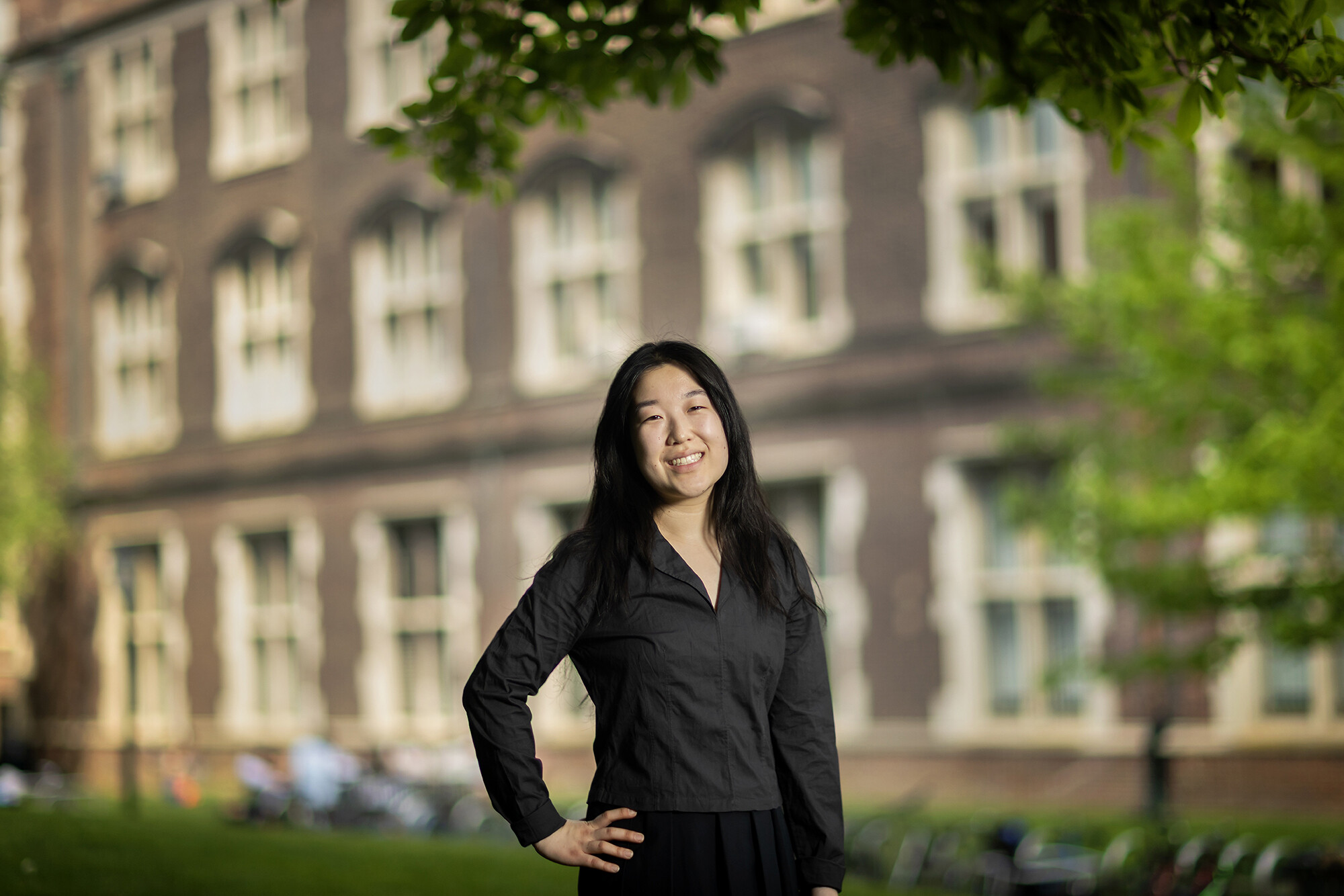
(From left) Doctoral student Hannah Yamagata, research assistant professor Kushol Gupta, and postdoctoral fellow Marshall Padilla holding 3D-printed models of nanoparticles.
(Image: Bella Ciervo)

When Janice Kim began her time at Penn, her goal was to become a software engineer. That didn’t exactly go according to plan.
Kim, from Dallas, Texas, was used to being the student in high school who would volunteer to design robotics team T-shirts—not as a career move, but just as “the designated person,” as she puts it. So, when given the choice in her first year at Penn, she opted to take a design class, Art, Design, and Digital Culture, and was surprised by how much she loved it.
She declared a minor, finished the minor requirements in a year, and decided the logical next step was a dual degree. She’s now set to graduate this month as the first Penn student to have a dual degree in computer science in the School of Engineering and Applied Science and design in the College of Arts and Sciences.
“I slowly got into design more and more, and the different practices, and now I’ve completely switched from an engineer who designs, to a designer who codes,” she laughs. “It’s kind of a big reverse.”
The transition wasn’t seamless or without challenges: She took on six courses each semester to finish in four years, was careful about balancing her curriculums, and worked extra hard to ensure her engineering skills were up to date and “not getting rusty as I went further into design, too,” she says.
Still, she found time to give back: In her first year, she started Penn Spark, a student club created to bring together designers and developers and bridge engineering and design. She also took the opportunity to give engineering students lessons in design.
“I felt like, because the [undergraduate] design program here is really new, there’s a lot of different directions you can go in and there’s been a rise in [user experience] and product design,” she explains, “so it’s been me taking what I’ve learned and collaborating with other designers to teach a crash course in design to teach as many people as possible.”
On the engineering side, she says she’s been able to help other students think about “the human aspect of it” when they are, for example, building an app. Kim is also involved with Hack4Impact, another club at Penn where she advocates for others to consider the balance between building excellent software and designing it well.
Micah Barrett, who co-taught Design Senior Seminar with Professor of Practice Ani Liu this semester, says Kim was ambitious from the outset and diligently taught herself new techniques while helping others.
“I think one thing that was really great about Janice is she was very generous with her time with other students,” Barrett says. “So, when we started breaking into small groups [for critiques], another student was exploring issues in 3D printing, which Janice developed expertise in, and she was generous to help the student and share knowledge and experience she had.
“She was a great citizen in the department as well as a student concerned with her own work.”
Another figure on campus who witnessed Kim’s success at Penn? Her sister, Joyce Kim—a Ph.D. candidate in higher education and sociology.
“I’m really proud of Janice, in so many ways, and I’m also really grateful for this time we got to spend together on campus,” says Joyce Kim. “That’s a real gift.”
Because she also taught her younger sister as a teaching assistant in an introductory sociology course, she was also able to see how their time together influenced her studies.
“Some of her senior design exhibition was really informed by that class, too, so it’s very much a full circle moment,” Joyce Kim says.
Kim received an award this spring from The Sachs Program for Arts Innovation to produce “Predictive Living,” a dystopian showroom featuring everyday objects—“smart” objects—like a trashcan, critiquing imagined futures and the impact of technology on society. The exhibit was on display at the Charles Addams Fine Arts Gallery in April.
A lesson Kim has learned during her time at Penn: “You can be multiple things.”
“For the longest time I wasn’t even calling myself a designer, I’d refer to myself as an engineer, and Penn has encouraged me—and professors have encouraged me—to seek out this interdisciplinary path,” she says. “It exists here, and pursuing a creative role is a beautiful and viable career option.”

(From left) Doctoral student Hannah Yamagata, research assistant professor Kushol Gupta, and postdoctoral fellow Marshall Padilla holding 3D-printed models of nanoparticles.
(Image: Bella Ciervo)

Jin Liu, Penn’s newest economics faculty member, specializes in international trade.
nocred

nocred

nocred